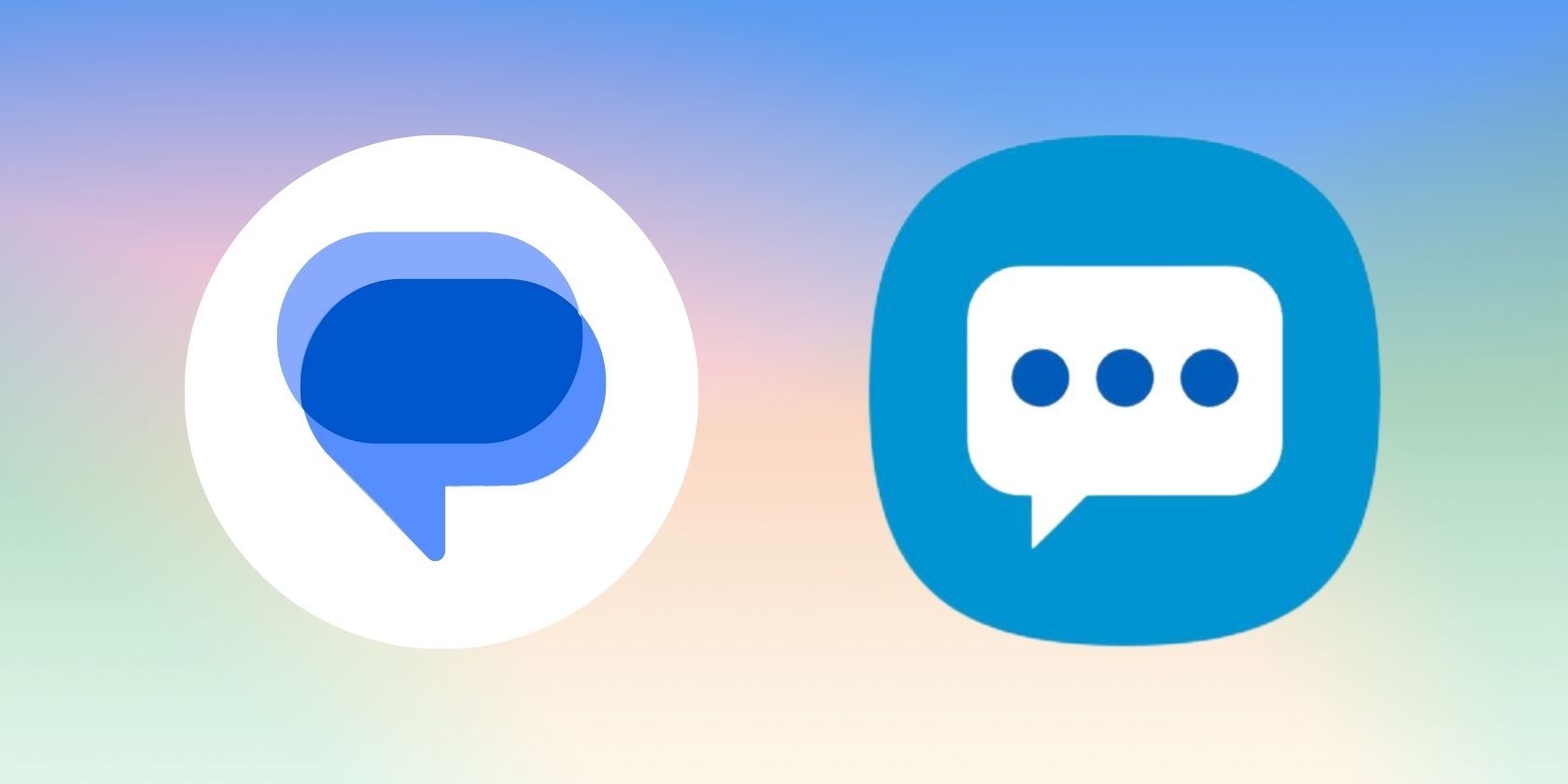If you own a Samsung device, you might have noticed how it came with two pre-installed messaging apps: Google Messages and Samsung Messages. Flagship Samsung phones have the former set as default, but mid-range and budget Samsung phones opt for the latter.
Both apps perform the same function but are different in a variety of ways. So which is better? What are the differences? And does it really matter which app you use? Let's find out.
User Interface
Both apps support Dark Mode, but Samsung Messages implements it far better than Google Messages. Enabling Dark Mode makes the former app turn pitch black (allowing you to reap the benefits of AMOLED displays), while the latter simply turns to a gray background while preserving its Material You design.
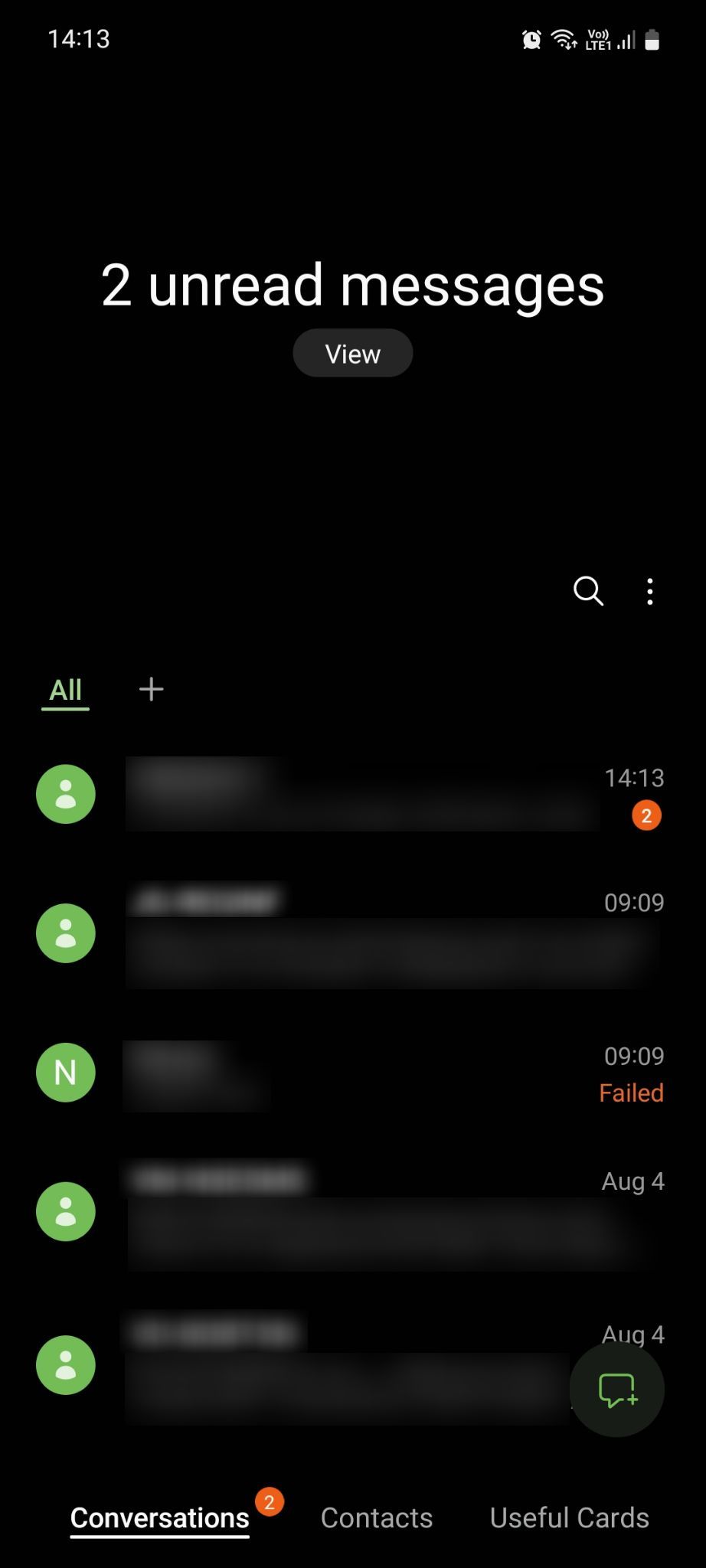
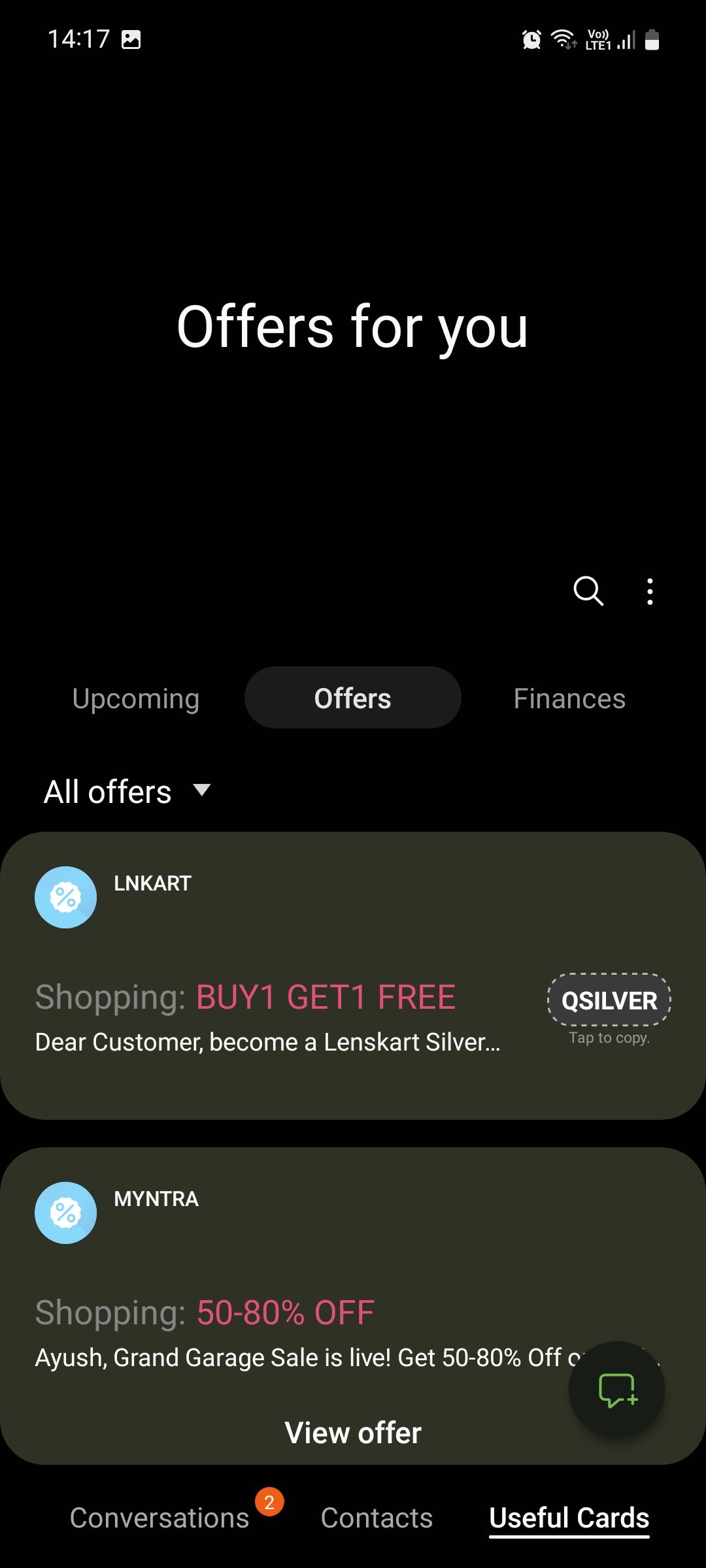
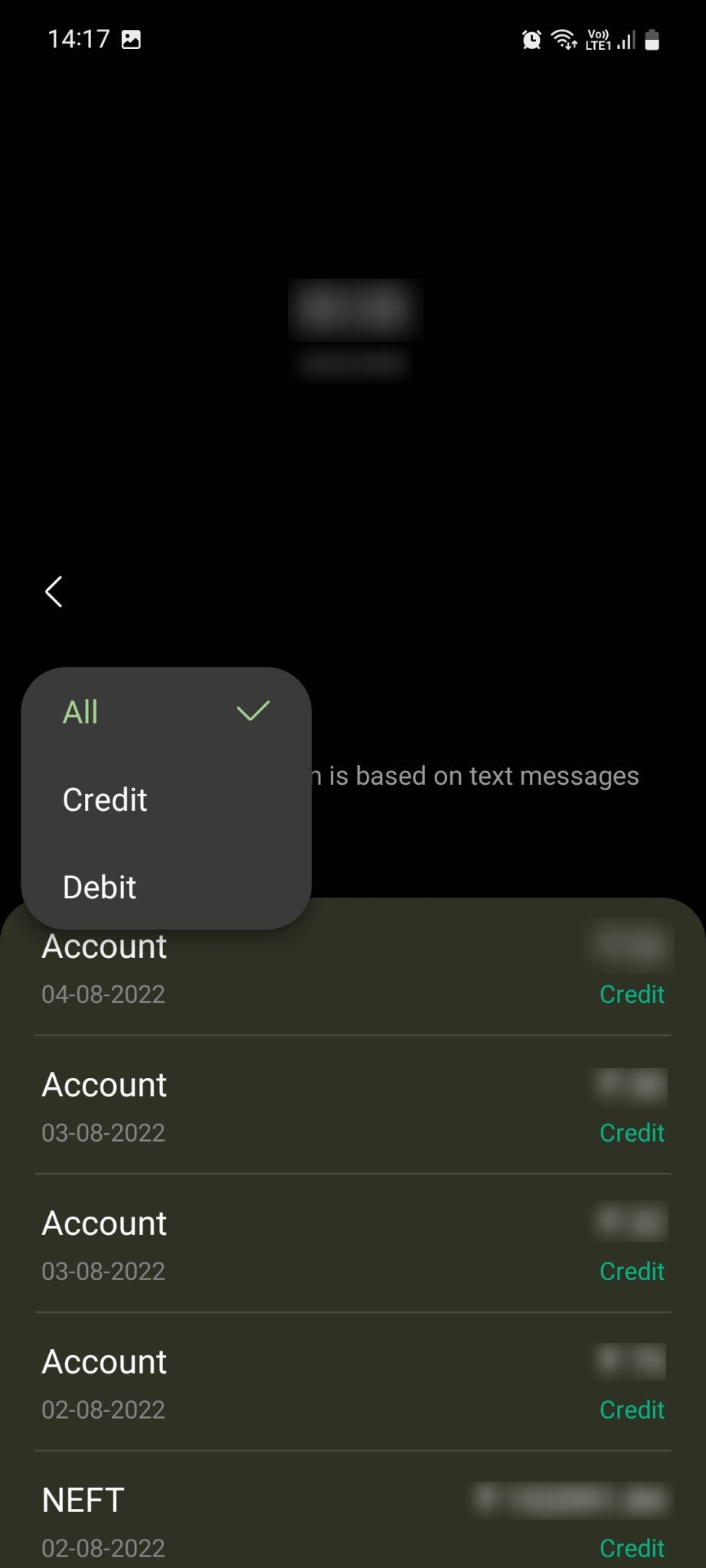
Upon launch, Samsung Messages arranges conversations from the bottom half of the screen for easier one-handed control (the same design layout found on the Quick Settings panel and other parts of One UI). The top half shows you how many unread messages you have.
Google Messages arranges conversations normally from the top. However, on Samsung devices, it's forced to copy the One UI reachability design, and the top half of the screen simply reads "Messages". You can swipe up on both apps to arrange them from the top.
Samsung Messages shows a small icon beside unread conversations with the number of new messages, but Google Messages simply bolds them to stand out against the read messages and puts a small dot on the side. The former also shows two lines of preview text, but the latter shows just one. The former has a search icon while the latter has a search bar.
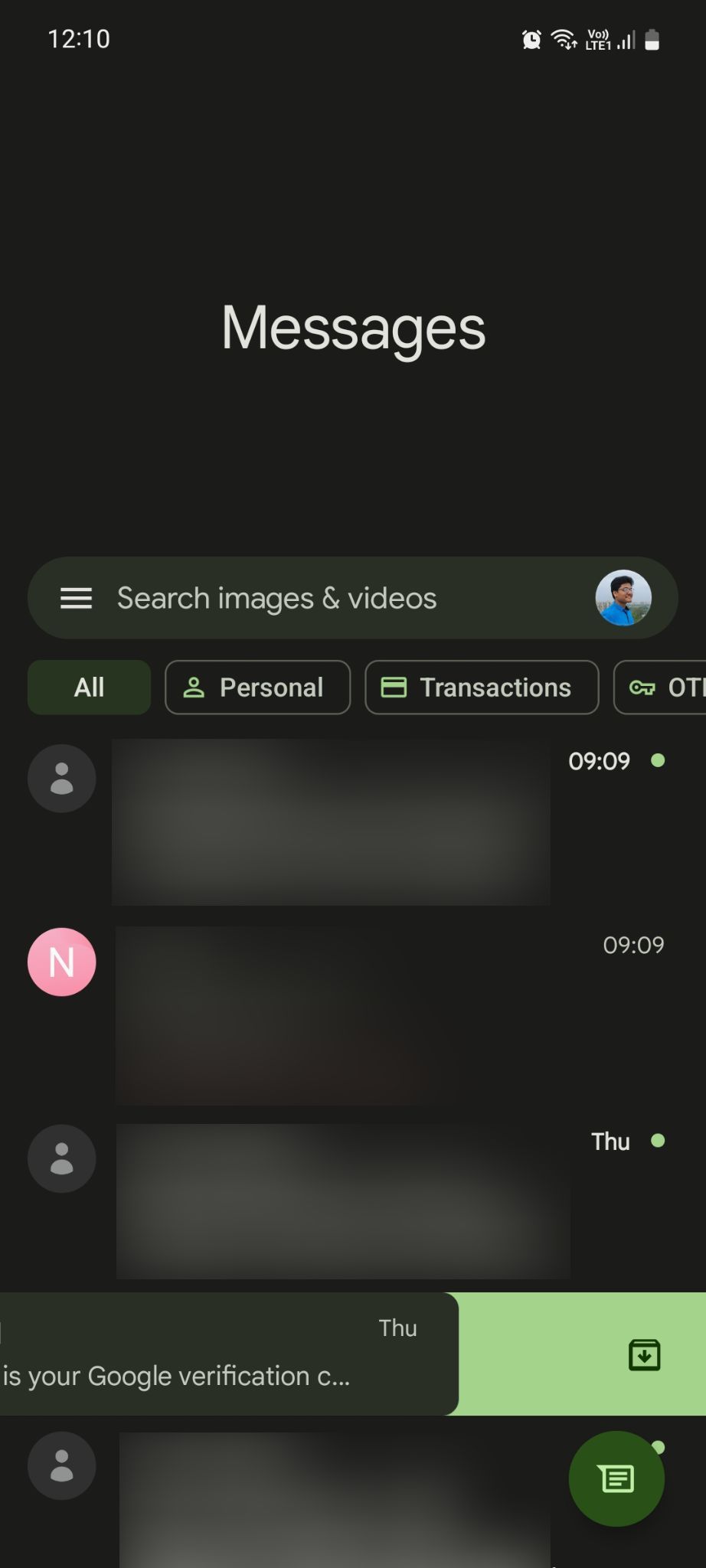
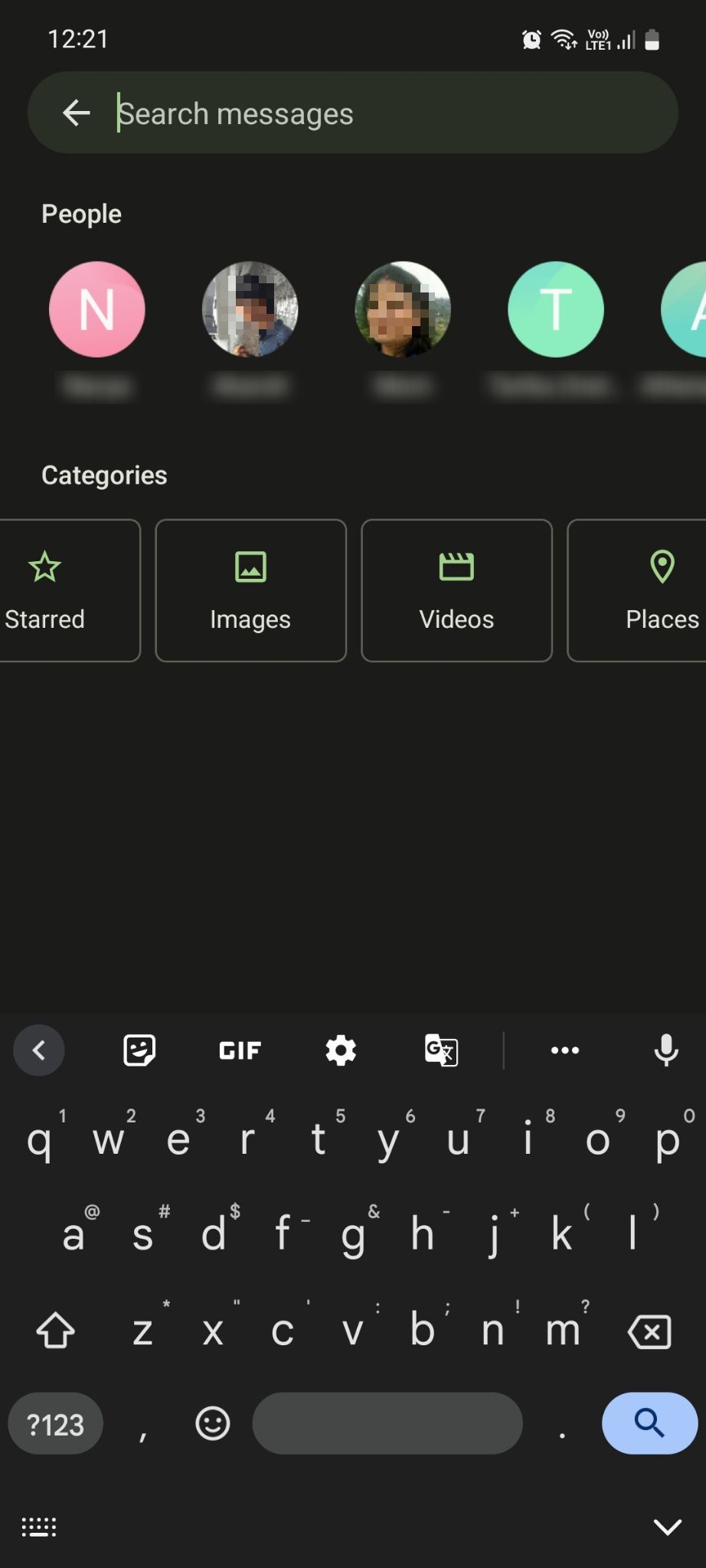
Google Messages divides conversations into four categories: Personal, Transactions, OTPs, and Offers. Samsung Messages shows offers, transactions, and upcoming events under its Useful Cards tab in a design that's more glanceable while also allowing you to create categories manually.
Samsung Messages has a Contacts tab, so you can easily find and text your favorite contacts. Google Messages shows recommended contacts when you tap the search bar at the top. On the latter, you can swipe a conversation to quickly archive it—a feature missing on the former.
App Features
Both apps allow you to pin conversations to the top, but Google Messages allows pinning a maximum of only three conversations while Samsung Messages allows up to 20. Both apps also allow starring messages and support group texts of up to 20 recipients.
Cross-platform sync is much better on Google Messages if you want to use it on your laptop or desktop PC. To use Google Messages for web, open the app, tap the hamburger menu, and tap Device pairing. Next, go to messages.google.com/web on your laptop or PC and scan the QR code.
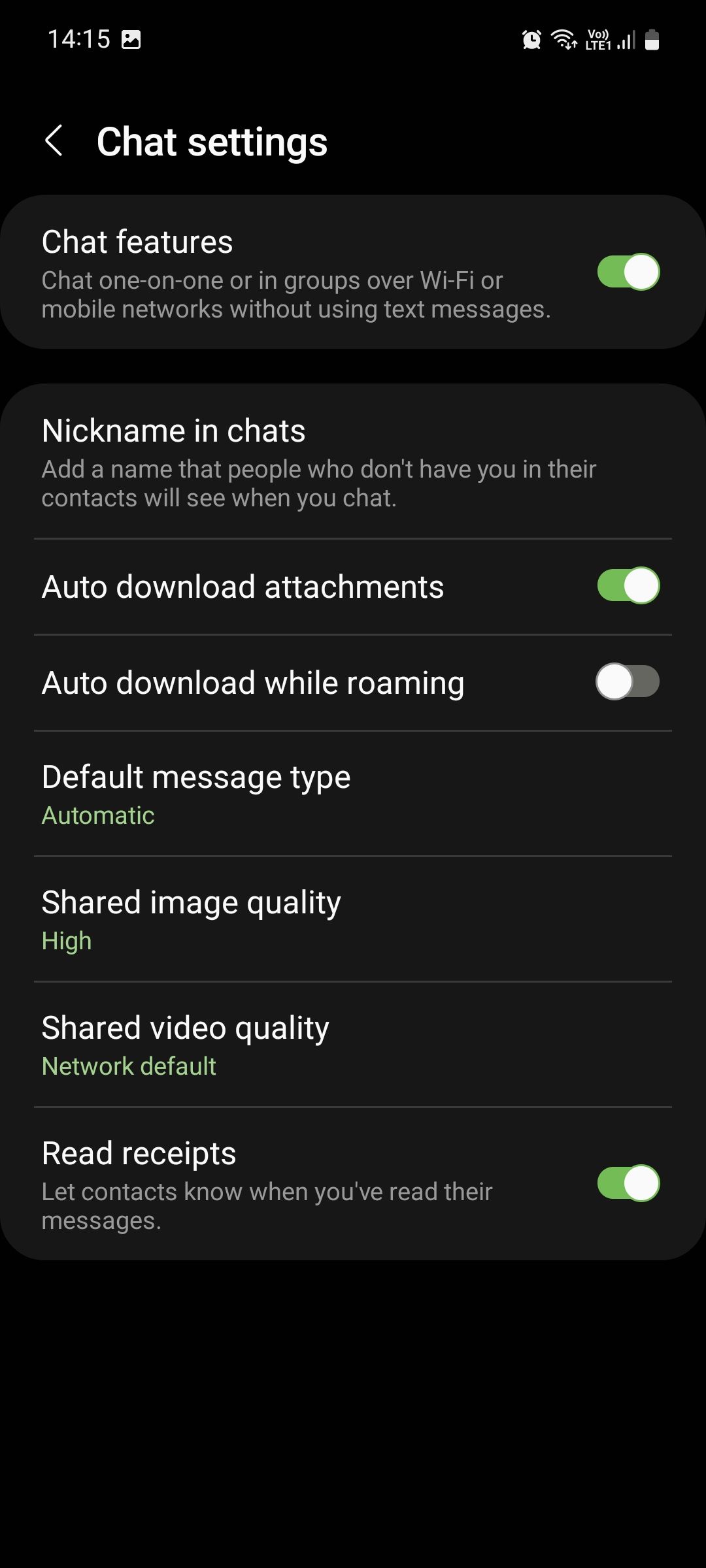
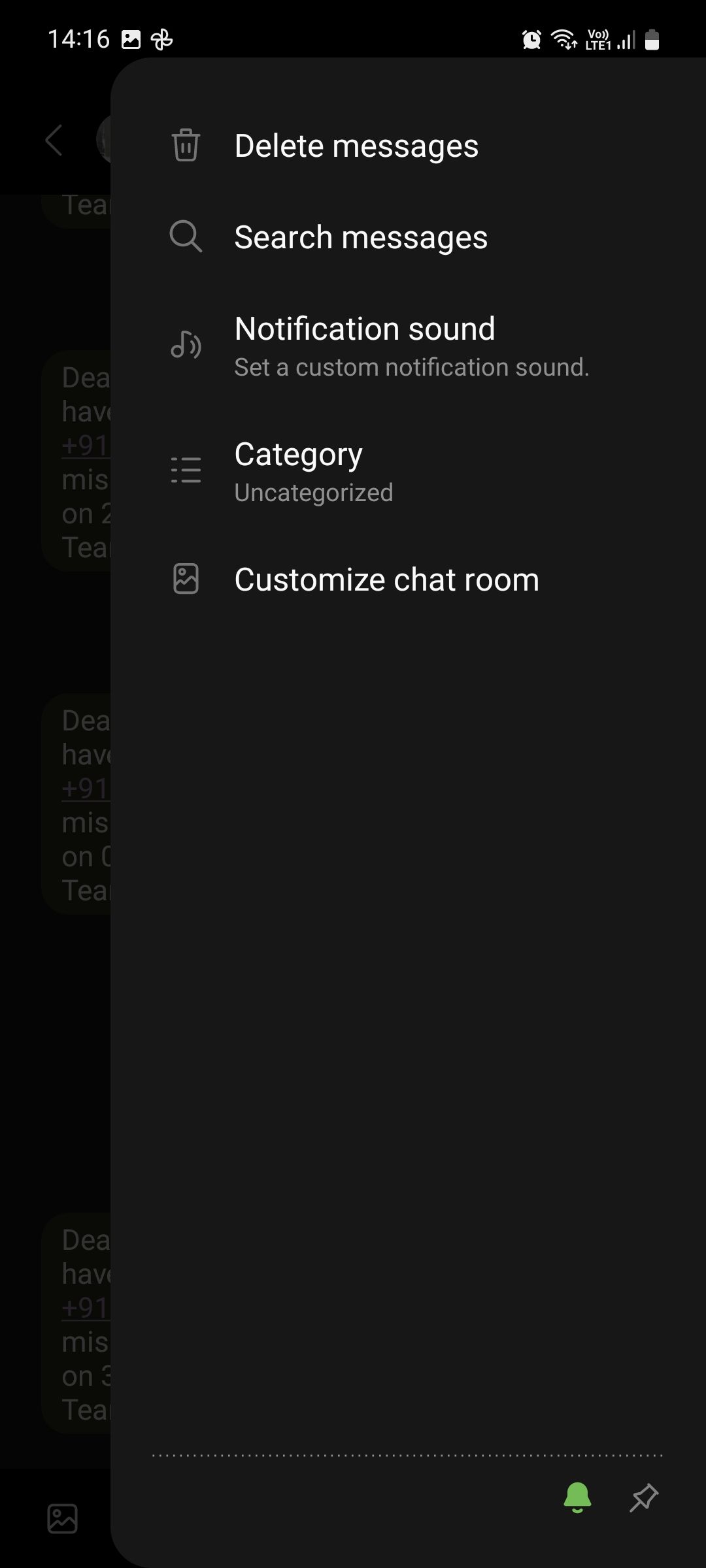
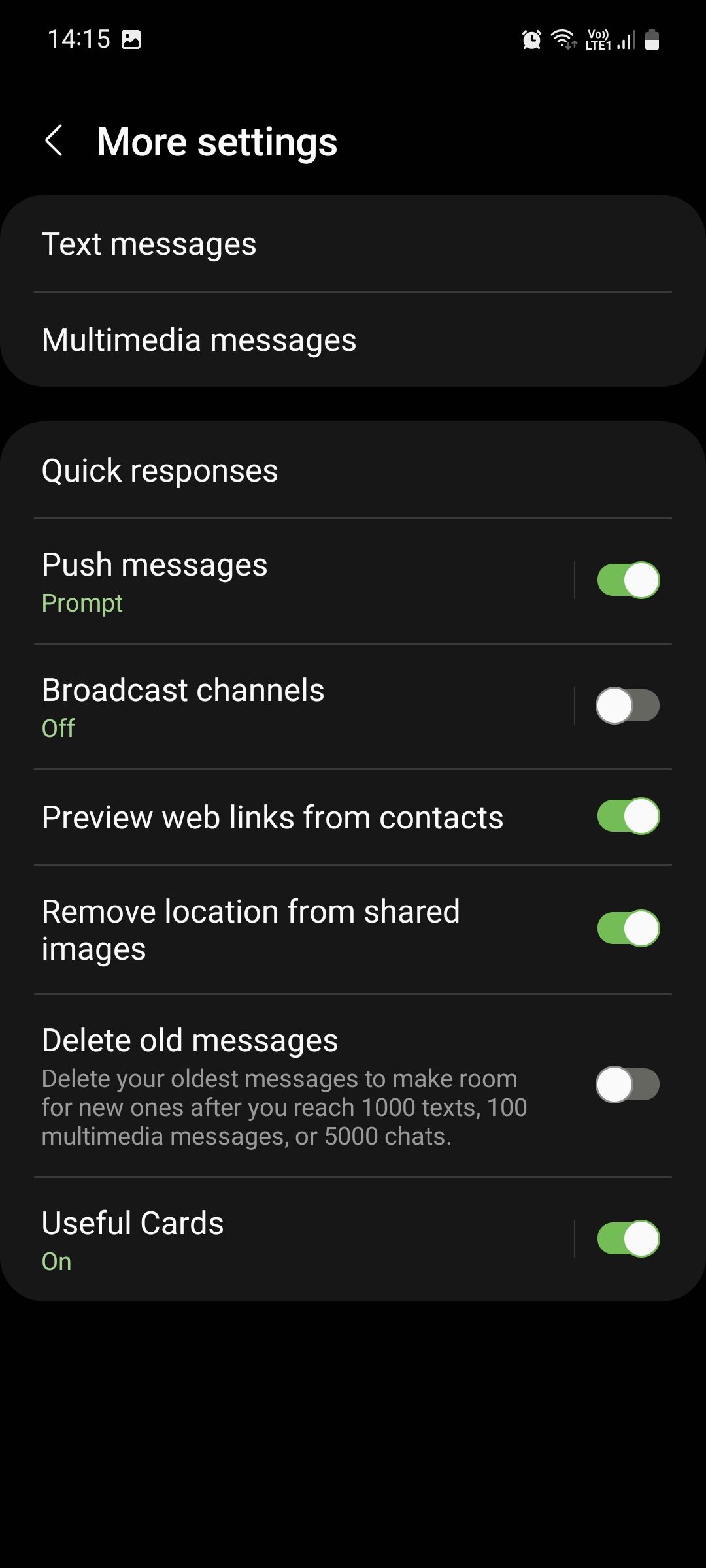
Achieving the same result for Samsung Messages requires you to have a Microsoft account and use its Link to Windows service to connect your Galaxy device to your Windows computer. Basically, you have to bother jumping hoops, and is hence not recommended.
Google Messages also allows you to automatically delete OTP messages after 24 hours, so your inbox isn't left littered once you're done using them. Samsung Messages doesn't have this exact feature, but it does allow you to delete old messages after you reach 1000 texts, 100 multimedia messages, or 5000 chats.
Both apps can send read receipts, copy codes from the notification panel, set custom notification sounds, and have floating chat bubbles. You can also increase or decrease text size by pinching out or in from the screen.
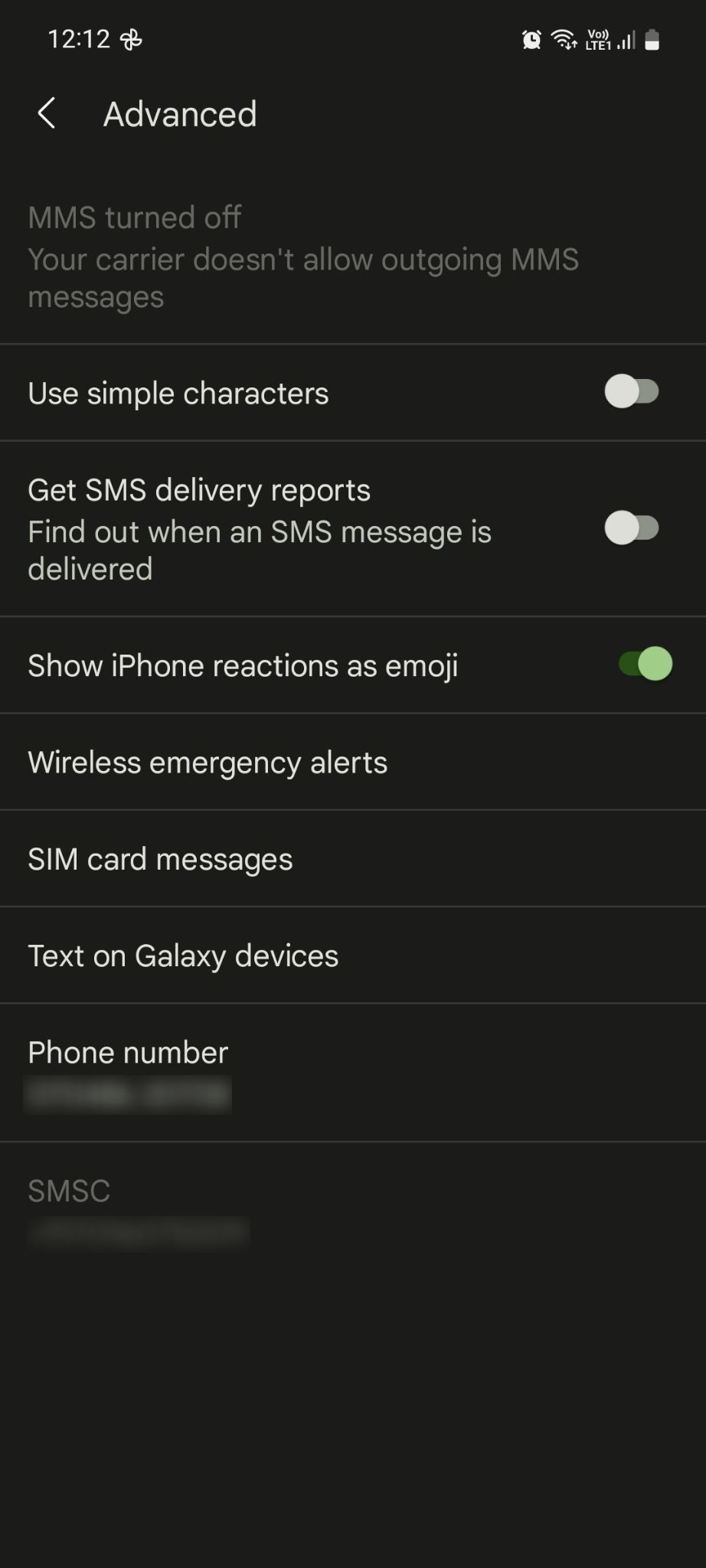
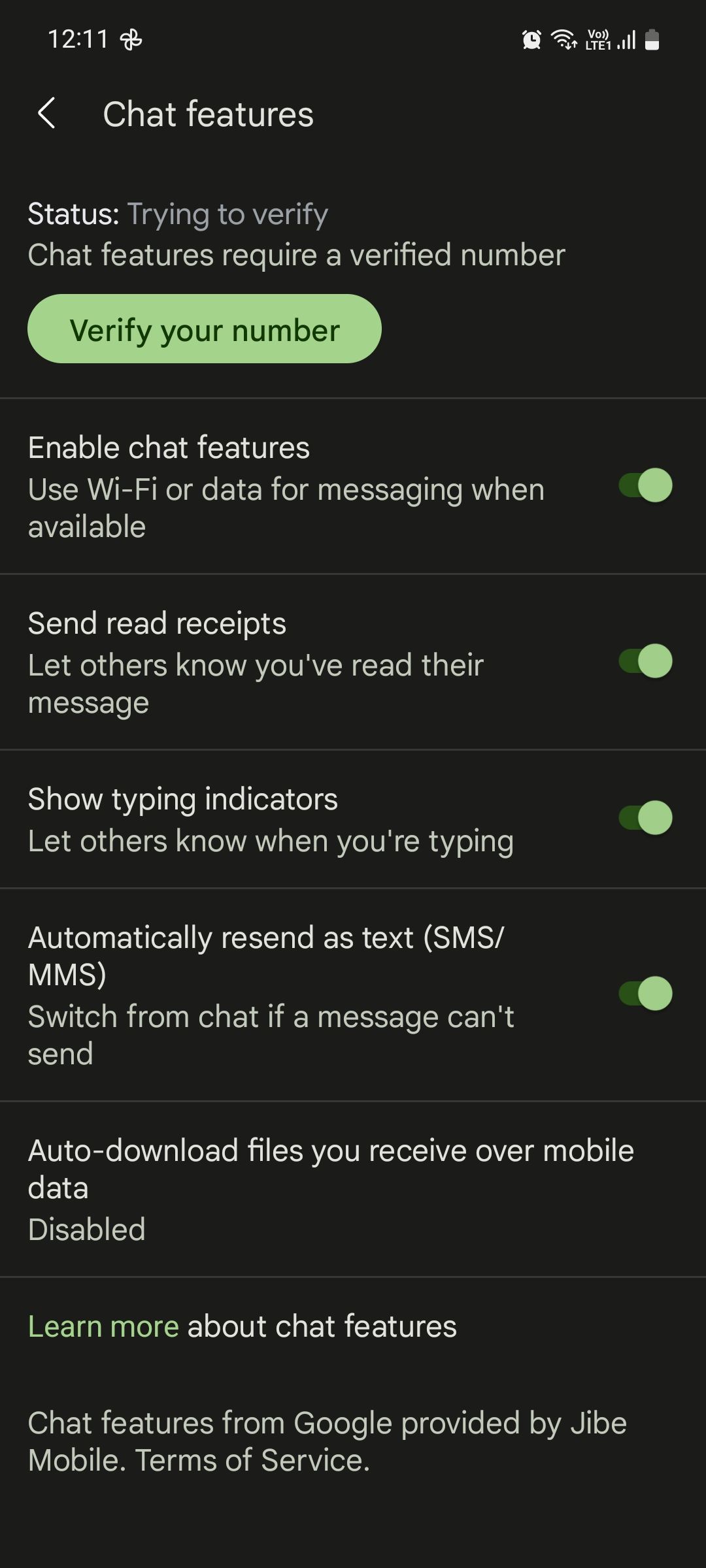
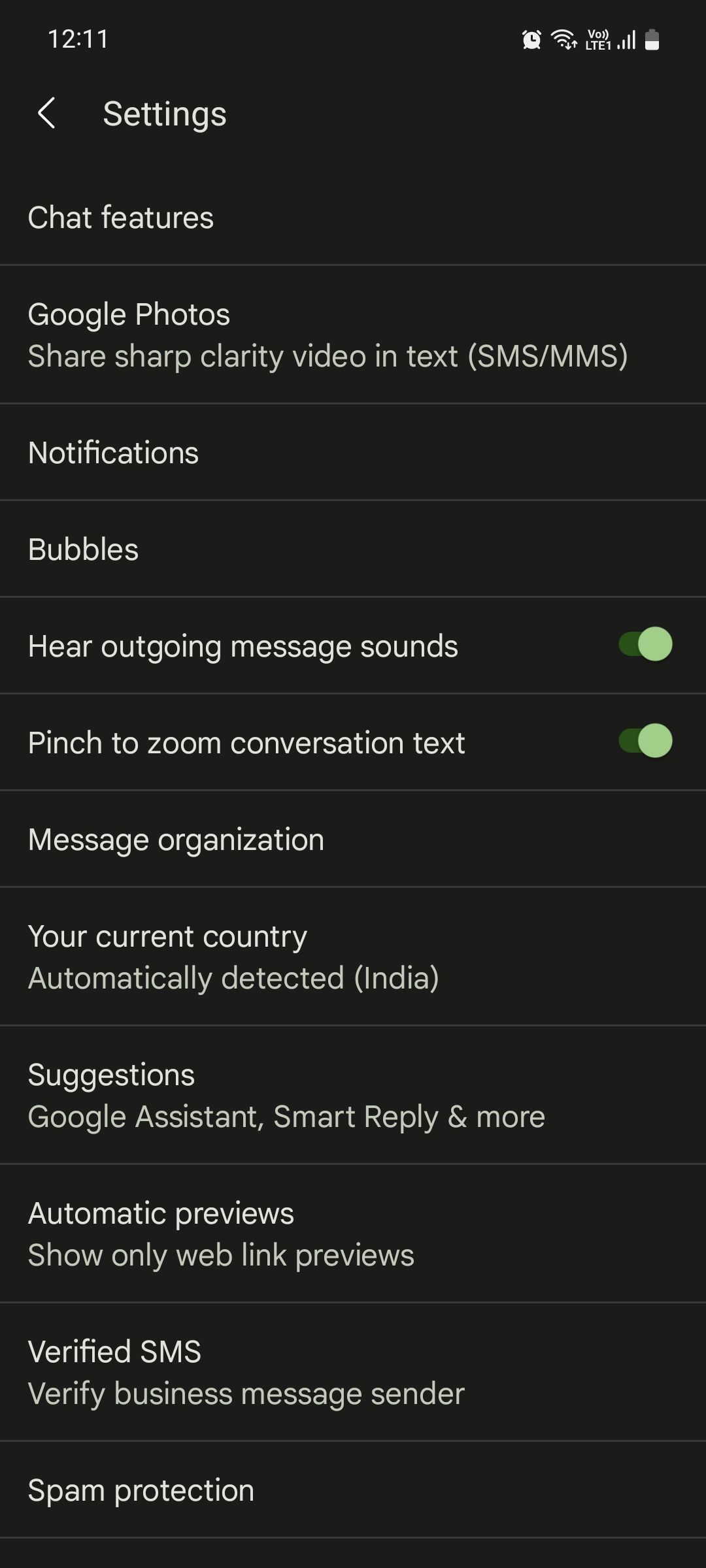
However, only Samsung Messages lets you set a custom background for each conversation, add a message to the Reminder app, and set a nickname that people who don't have you in their contacts will see when you chat. These are some of the best features of Samsung Messages.
However, on Google Messages, you can see iPhone reactions as emojis instead of having them appearing as individual SMS text messages. This is one of the latest features in Google Messages.
Google Messages is much smarter at identifying spam messages and will label them as such to warn you before you open the conversation. This is very useful for obvious reasons. Sadly, Samsung Messages treats all incoming messages as the same and doesn't display any sort of indication for spam. So, if you receive a lot of spam texts, Google Messages can protect you.
One more important thing to note is that, on Samsung Messages, you can delete a text message and still revive it later on from the Trash menu within 30 days. But on Google Messages, once you delete a message, it's gone forever which can be inconvenient if you later found out that the message was important.
Message Tools
Both apps allow sending images, videos, audio files, voice recordings, emojis, stickers, and GIFs, but Samsung Messages forces you to use Samsung Keyboard instead of Gboard to send stickers—we're not sure why. You can also share your location and contacts, schedule messages, add subject lines, and save drafts on both apps.
Sending videos on both apps is a major pain as they're torn down in quality to ridiculous extents, so much so that the content in them sometimes becomes unintelligible. Because of this, you're better off using WhatsApp, Discord, or any other third-party messaging service for sending videos.
That said, Google has been trying to fix this issue by implementing the RCS messaging standard, so that the messaging experience on Android can be almost as smooth as iMessage on the iPhone.
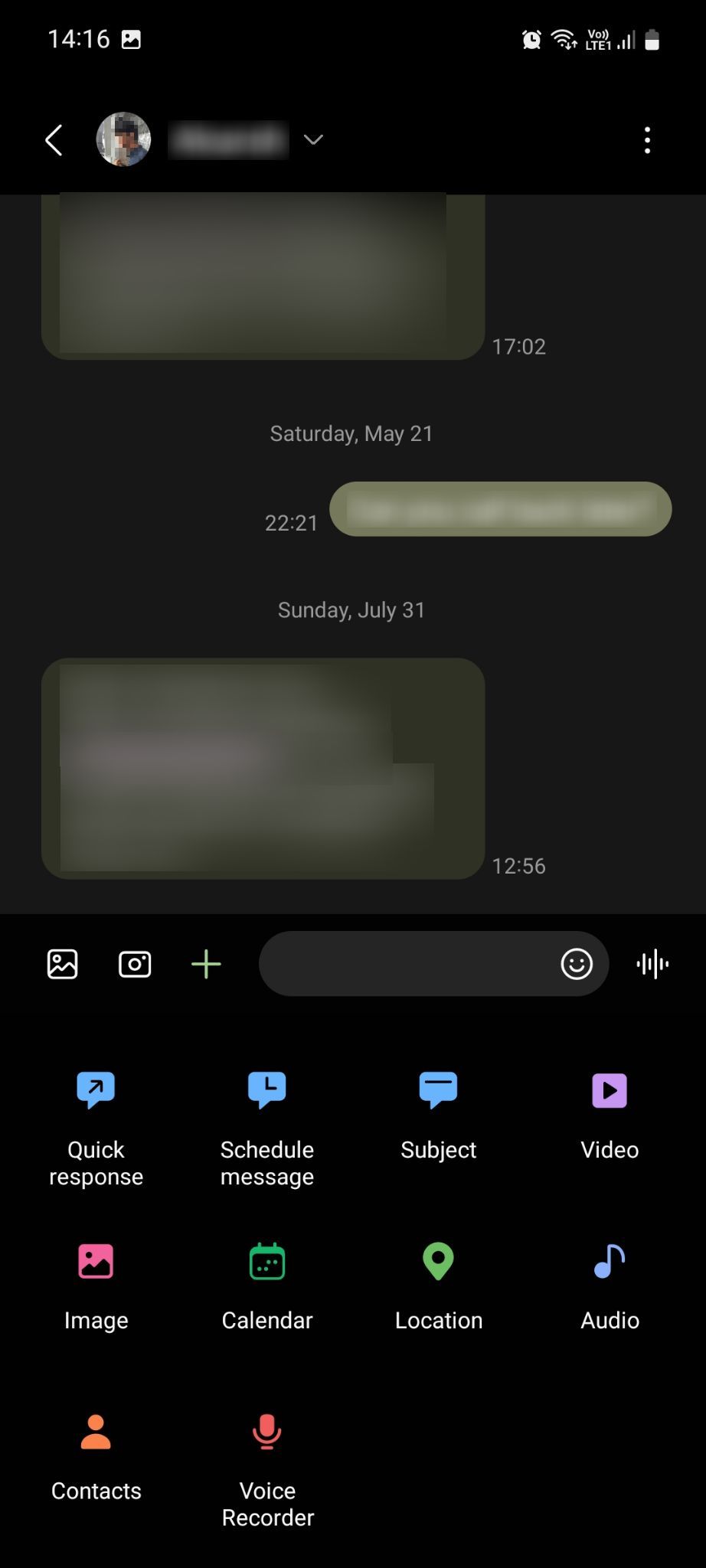
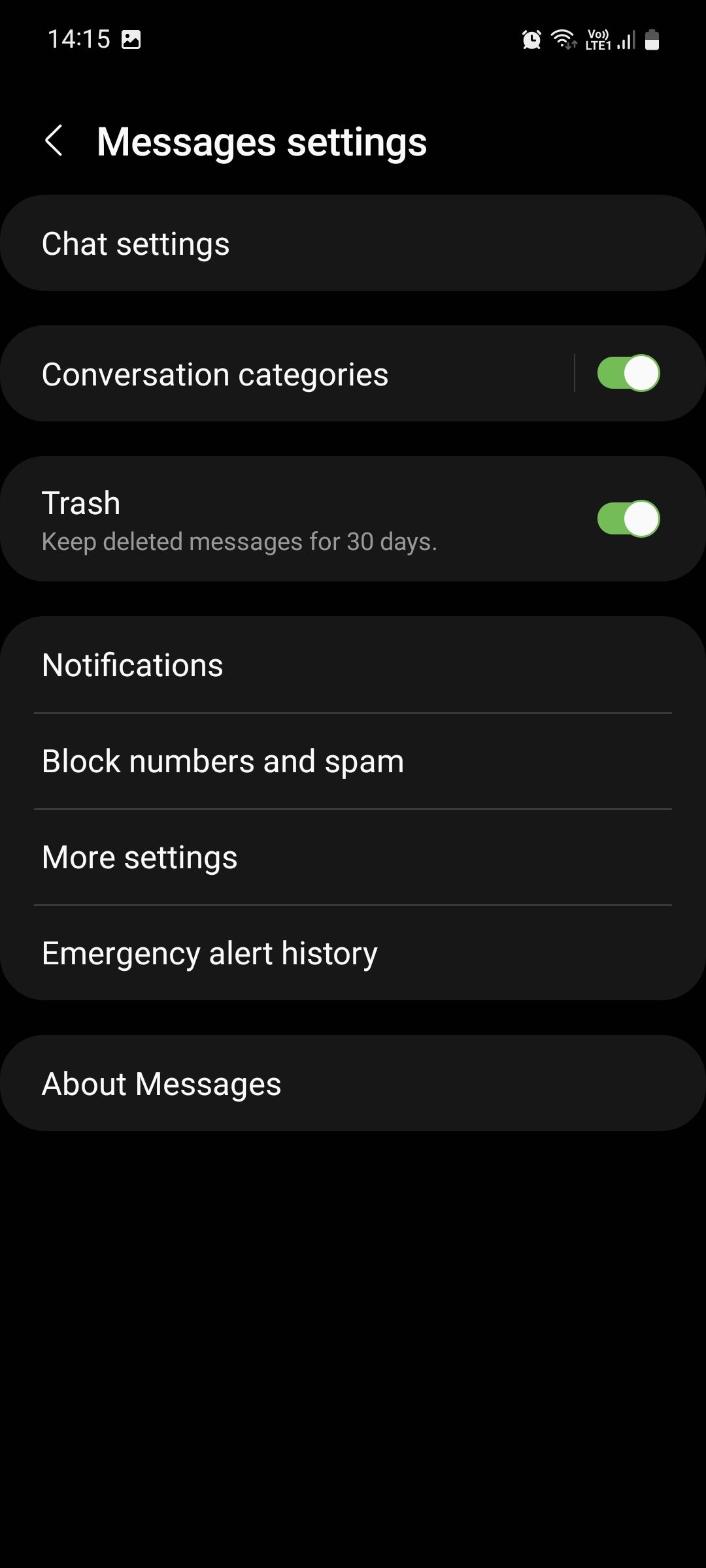
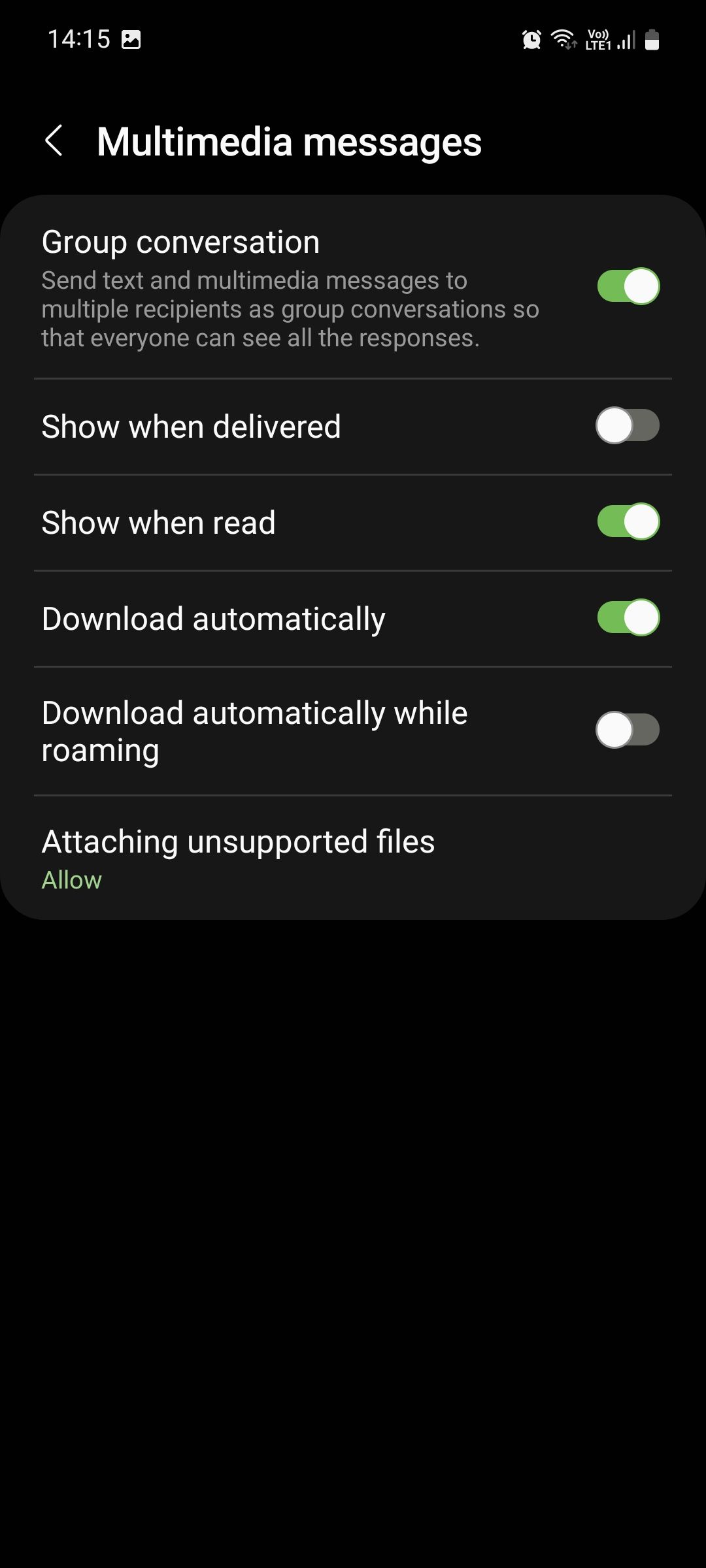
Only Google Messages allows sending documents (up to 307KB only) and marking your messages as urgent. But with Samsung Messages, you can send calendar events via text or as a VCS file and send quick responses such as "What's up?", "How's it going?", "Sorry, I missed your call." and more.
Both apps support the MMS protocol for multimedia communication, but not all mobile carriers allow MMS. If yours doesn't, you might not be able to send anything more than SMS text messages. If your carrier does support it, but the recipient's carrier doesn't, they might receive a browser link to your sent photos, videos, or files instead.
Google Messages does have a few extra features that make it a more compelling option. Under the Suggestions menu, you'll find a couple of handy features that offer in-conversation suggestions based on the context of your messages.
For instance, Smart Reply suggests common responses to the messages you receive for faster communication, and Suggested Actions can help you quickly create an event, share your location, attach recent photos, or send GIFs. Smart Reply and Suggested Actions are some of the best features of Google Messages.
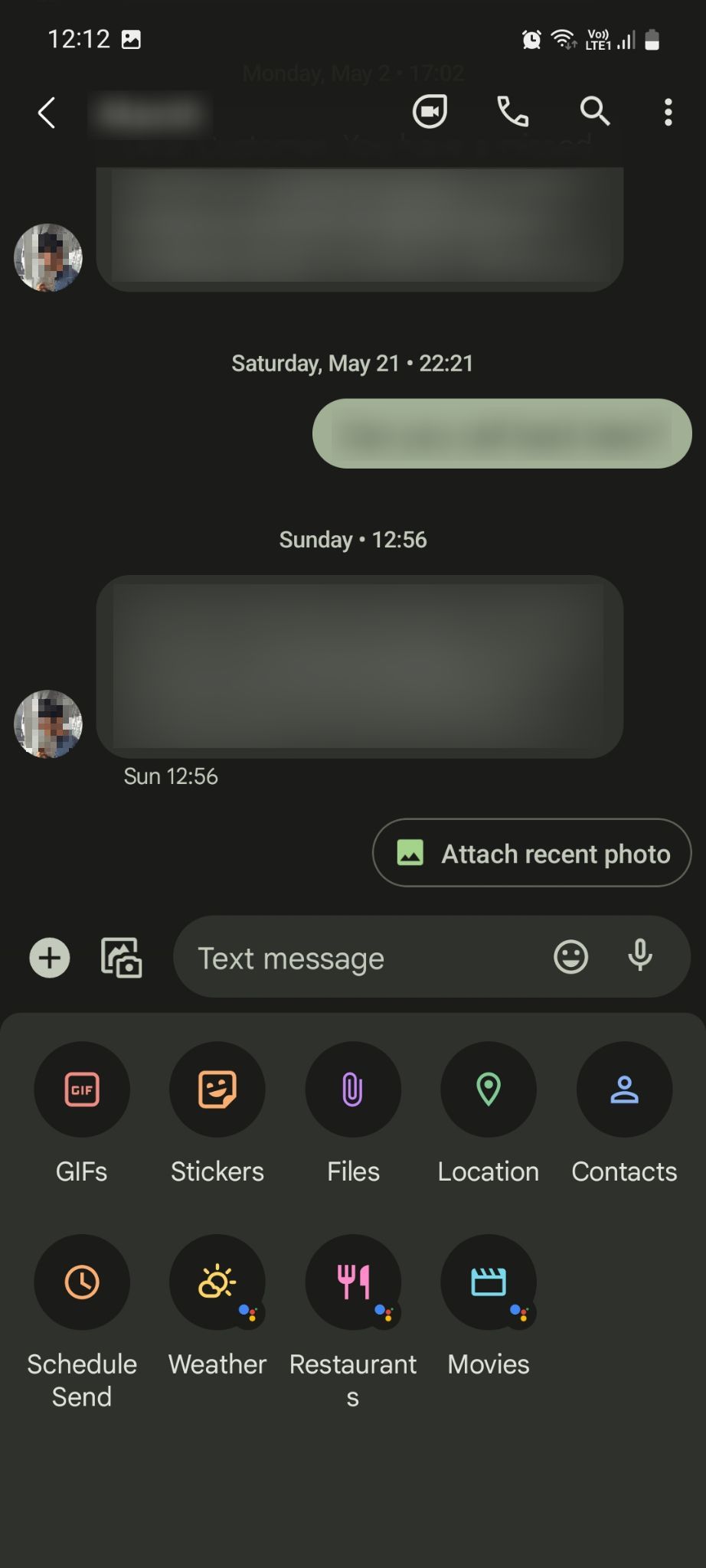
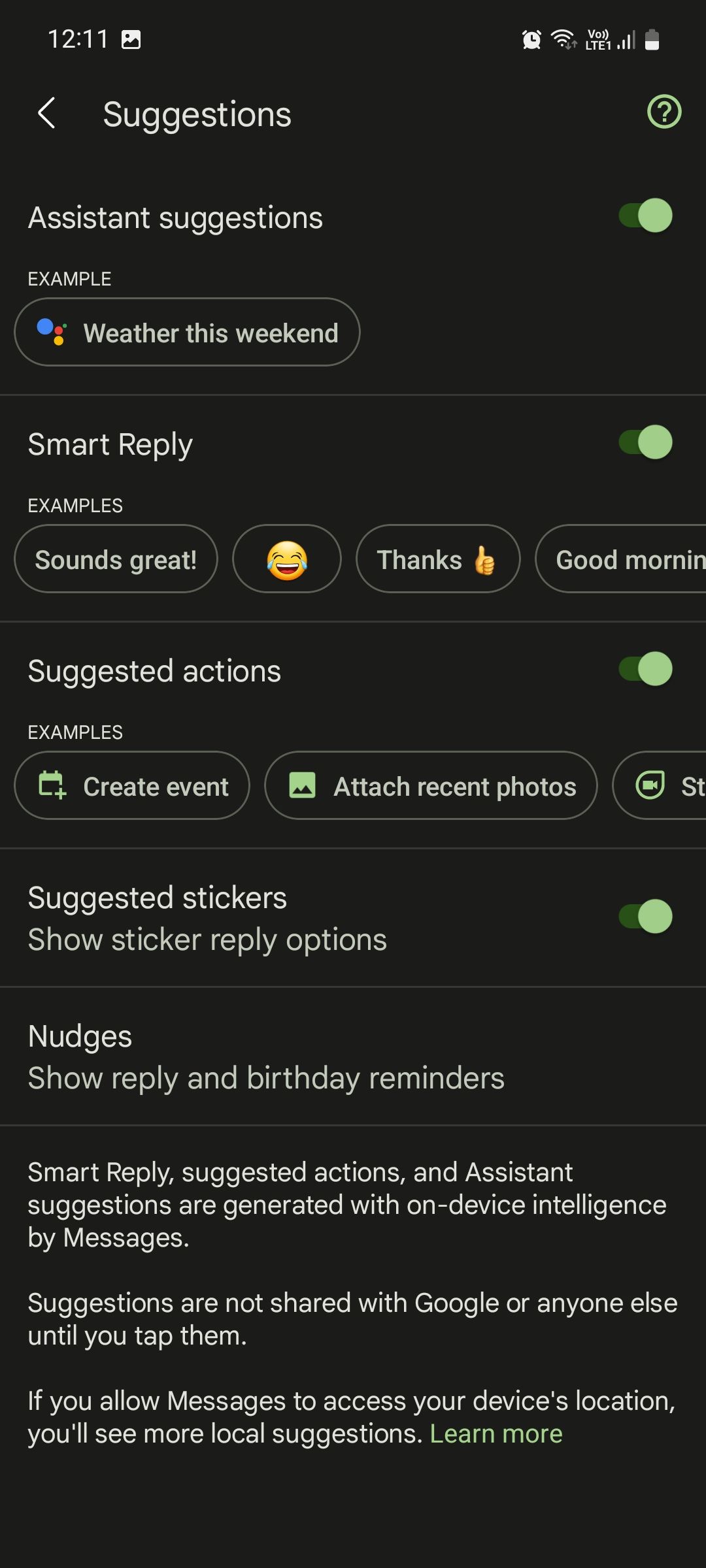
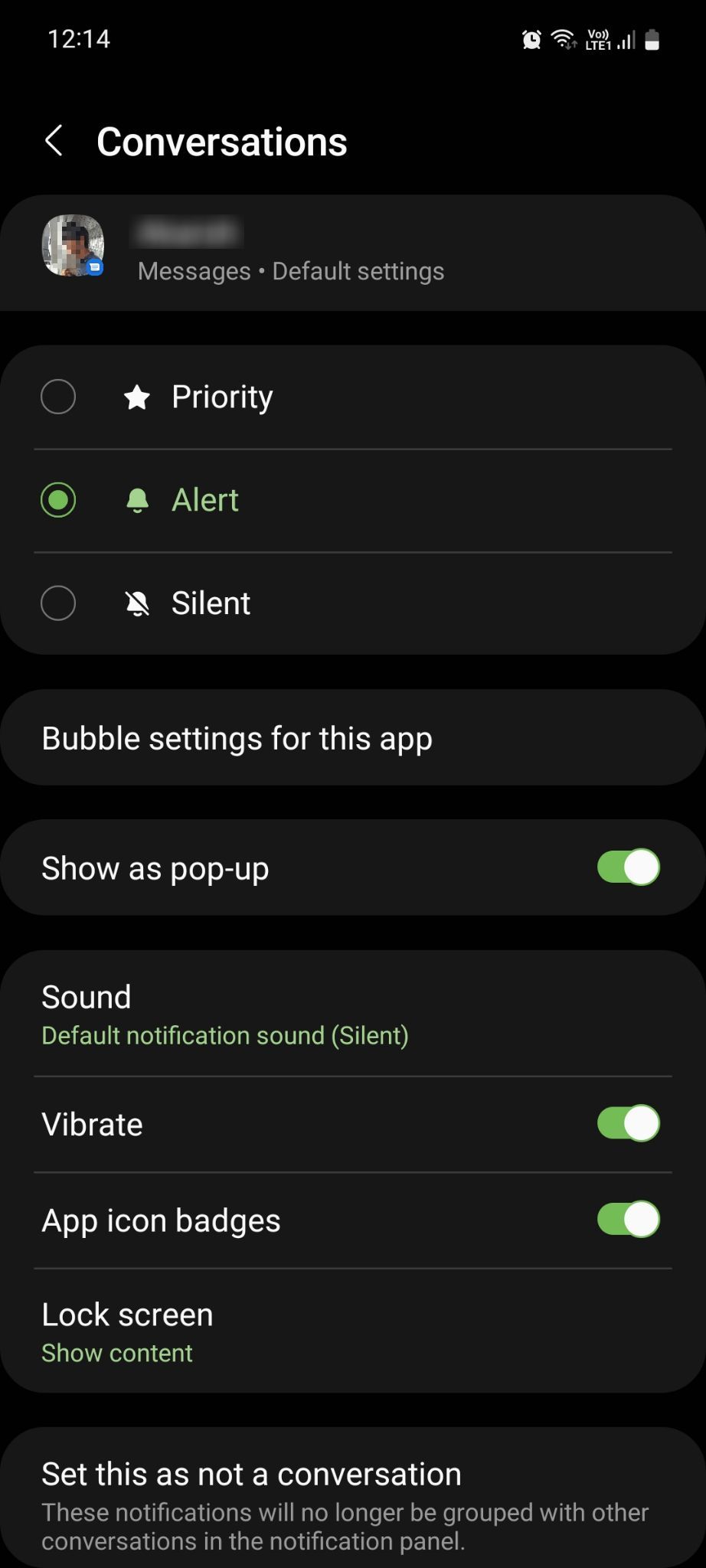
You can also use Nudges to receive birthday reminders and have messages that "may need a reply or follow up" move to the top of the list of conversations, so you don't forget to respond to them. And Assistant suggestions can help you quickly search for weather details, nearby restaurants and theaters, and more—right within the app.
Google Messages Should Be the Default Android Messages App
Both Google Messages and Samsung Messages are good apps; although the latter does have a few unique features, the former is the clear winner. Not just because of its features, but also because it's easier to establish as a universal messaging solution.
The confusion around messaging apps is annoying and unnecessary. It shouldn't be the user's job to worry about different messaging protocols and inconsistent feature sets. So, here's our hot take: Google Messages should be the default messaging app on all Android phones.
If you own a stock Android phone, this is not a problem since there's no bloatware. But most Android brands pre-install their own messaging app on their devices and most people tend to use the default messaging app on their phone, which only makes things more confusing.

